Early feedback on 22 Design’s Outlaw, their new NTN binding, indicates that it skis great. Downhill performance was, as hoped, reminiscent of the Hammerhead in position #3 or #4 depending on how strong the spring tension is set to.
Touring is also very similar to an Axl, with the same basic limits to range of motion of only 45°+, but frictionless within that range. More ROM might be nice on occasion, like on a tight switchback on a steep slope in deep snow, but 90% of the time it is not a noticeable limit.
To address those issues 22D modified the composition of the plastic to make it stronger and modified the cam part by adding material near the detente to prevent it over rotating.
Changing the Hook
Installing the new hook and cam assembly is a fairly simple operation. Start by removing the tension adjusting end cap over the spring, then pull the spring out. While you can use the adjustment tool 22D provides, I found using this tool to be tedious. Thankfully 22D realized this potential issue up front and designed a hex head on the end cap so you can use a 7/8” socket; the aluminum-on-aluminum threads create a fair amount of friction so using a socket to tighten or loosen the end cap is highly recommended. There is a solution to the metal-on-metal friction, which is really the point of this post, further down.
Then, using a #25 Torx driver, remove the four screws holding the plastic blocks that secure the hook assembly to the side tubes of the . You’ll probably need to pry the steel wings apart with a flathead screwdriver.
To put the new hook assembly on, reverse the procedure.
Reducing Adjustment Friction
First, however, I strongly recommend you wrap some plumbers tape on the end of the threads to the spring housing tube. While you can wind the tape on after you re-install the hook assembly, it’s easier to do before. Alternatively you could add a dab of oil to the threads, but oil could compromise the plastic parts if you’re careless in how you slobber it on, and over time it will dry out. Plumbers tape creates a layer of teflon sandwiched between the threads that will last much longer and prevent oxidation of the metal threads it covers.
This practically eliminates the metal-on-metal friction between the end cap nut and the threaded spring tube, so much so that adjusting the tension in the field is much easier with the bottle-cap opening adjustment tool. Because it was already loaded though, I used a 7/8” socket to tighten up the spring tension.
A quick carpet test indicates that the problem of over rotating the step-in cam is fixed. Whether or not the composition of the plastic is sufficiently improved will take a bit of time to confirm.
If you’re a beta tester, your input is requested below.
© 2015

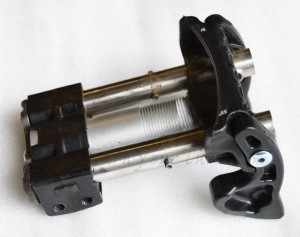
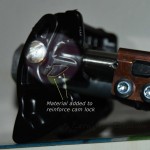
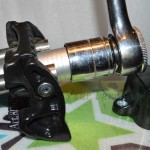
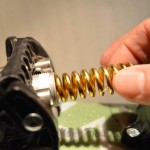
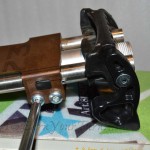
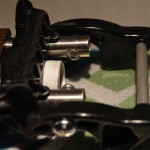
1 comment
I’m psyched to see some competition in the NTN space but I’m not sure that these offer enough advantages to really take on Rotefella. Yes they feel most similar to traditional 75mm setups which will make the transition easier for many. They also tour well, ski well, and hopefully hold up well. But compared to a freedom or freeride they lack releasability*, second ski kit options, and the brake situation baffles me. Why sell a binding that offers a step in feature without a brake? If you’ll be using a leash you end up bending over to put the ski on anyway, assuming you’re putting on your skis on flat ground so that they’re not running off to begin with. Of course you can buy a brake for the bindings, but it’ll cost you, and it’ll cost even more if you want a wider brake. It feels a lot like being nickle and dimed which I believe will leave customers with a bad taste in their mouths. I really really want to like the bindings as they do ski pretty damn well, but who is the market for these?